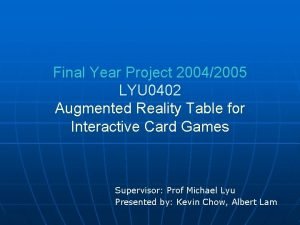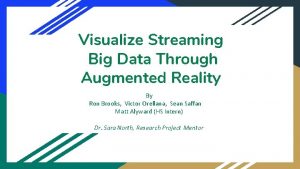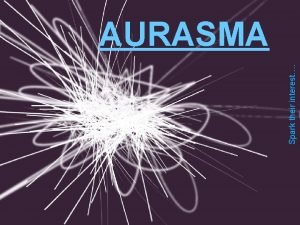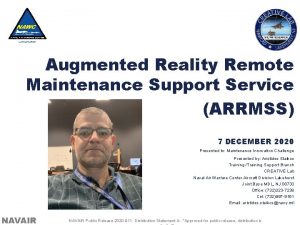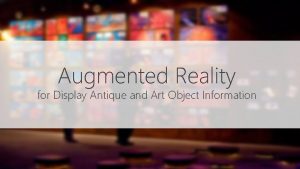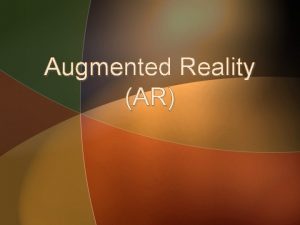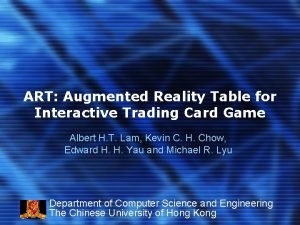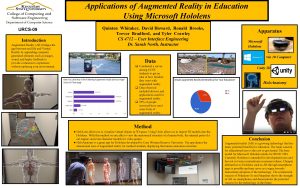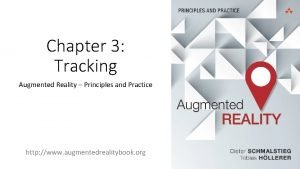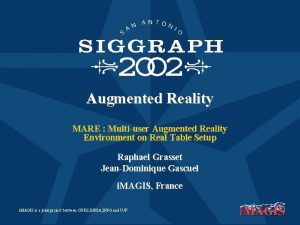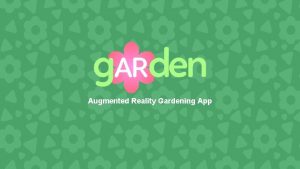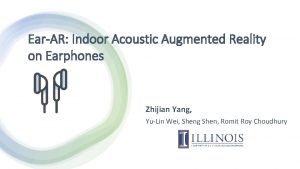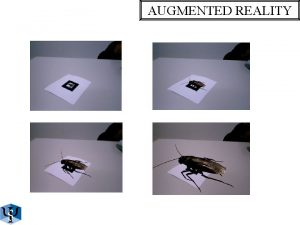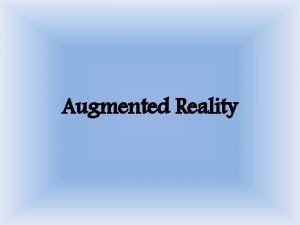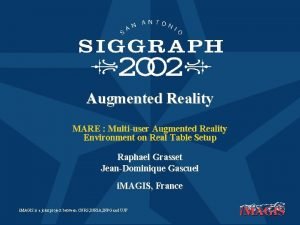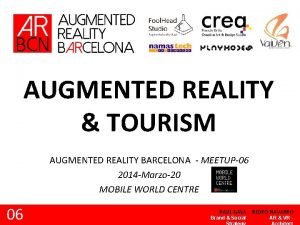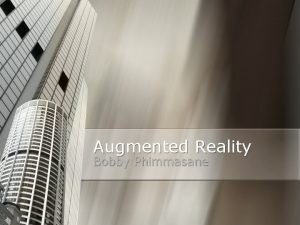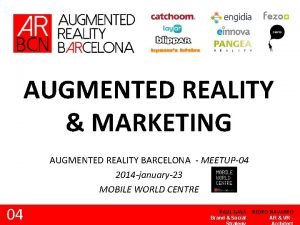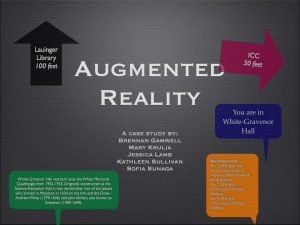SOCIAL TRAINING FOR AUTISM USING AUGMENTED REALITY FINAL











- Slides: 11

SOCIAL TRAINING FOR AUTISM USING AUGMENTED REALITY FINAL PRESENTATION The Future of Information Alliance May 2017

WE ARE… • Swanand Bhave, Telecommunications Engineering, Clark School of Engineering • Kimberly Martin, Hearing and Speech Sciences, College of Behavioral and Social Sciences • Gregory Schuler, Library and Information Sciences, College of Information Studies • Wenxin You, Special Education, College of Education • Vinita Atre, Human-Computer Interaction, College of Information Studies (Student Team Consultant) • Faculty Mentor: Gulnoza Yakubova, Ph. D. , Special Education, College of Education

WE WON! NOW WHAT? FROM PROPOSAL TO ACTION January 2017 Planning and Developing the Content February 2017 Starting the Development of the Application March 2017 Application Development April 2017 Exploring the Use of the Application We need to transform a proposal into a product. That means building an Augmented Reality (AR) mobile application that will help adolescents with autism spectrum disorders (ASD) practice their conversational skills. What do we need to do? • Organize the team and assign responsibilities • Create the content • Build out the technical infrastructure and begin AP development • Engage our external partner, the Barrie School, and define their involvement • Find adolescents with ASD willing to use the AR application May 2017 Emerging Themes from the Usability of the AR Application and Presentation

CREATING THE CONTENT • Research into best practices and current trends in teaching adolescents with ASD • General teaching methodology for adolescents • Specific learning methods for students with ASD • Collaborating on writing the content • Developing the script and conditions for the application • Looking for the useful combination of age-appropriate interaction and providing value • Engage with Barrie School for age-appropriate interaction and design collaboration

AUGMENTED REALITY • Building an Integrated Development Environment • Selecting the appropriate infrastructure • Researching the current best practices in AR • Learning a new realm of technology • AR is developing rapidly • Diversity of uses but still nascent and many unknowns to navigate • We are not a gaming studio • Implementing a new technology for a specific application

AUGMENTED REALITY (CONTINUED)

INTEGRATING LEARNING OBJECTIVES INTO THE AR APPLICATION • How do we take the scripts and build them into the AR world? • Collaboration between content experts and software development experts • Conditions, conditions • Turning the content/scripts into algorithms and workflows • How to anticipate every response a user might speak? • Providing feedback and encouraging use • Prompting the user the right way • Overcoming technical issues • Bridging the gap between new technology and learning

TESTING AND TEST RESULTS • Five adolescents with ASD • Teenagers wanted to jump ahead faster than we anticipated • Comparing Pre- and Post-tests • Eye contact increased • Body posture towards partner increased • Responding with relevant information increased • Four of the five adolescents were comfortable interacting with the avatar • One adolescent needed more time to understand a new technology and what AR was and needed scaffolding to introduce him to using the AR application

LESSONS LEARNED • Planning and more planning • AR is emerging and it takes time to master • Building an infrastructure and adapting to a new platform takes time and the ability to implement changes must be managed • Scale appropriately • Finding the right way to integrate the AR application is very important • Design counts • Focused more on content and interaction, but what the user sees and hears is perhaps more critical in the application

LESSONS LEARNED (CONTINUED) • Fits well with a famous saying: “If you have met one person with autism, you have only met one person with autism” • Individualize your approach to working or communicating with a person with ASD • Not every student with ASD is familiar with AR technology • Do not assume that everyone knows how to use and is comfortable with the technology • Thus, gradually introduce the student to the AR application and model the use of the application to the users • Get their feedback and contribution to the design of the AR application to appeal to the users • Fits well with a saying: “No speaking about autism without people with autism”

ACKNOWLEDGEMENTS AND THANKS Vinita Atre
 Augmented reality final year projects
Augmented reality final year projects Augmented reality big data
Augmented reality big data Aurasma education
Aurasma education Arrmss
Arrmss Augmented reality architecture diagram
Augmented reality architecture diagram Pengertian augmented reality
Pengertian augmented reality Augmented reality card game
Augmented reality card game Microsoft augmented reality for education
Microsoft augmented reality for education Augmented reality: principles and practice
Augmented reality: principles and practice Multi user augmented reality
Multi user augmented reality Augmented reality garden
Augmented reality garden Ear-ar: indoor acoustic augmented reality on earphones
Ear-ar: indoor acoustic augmented reality on earphones
